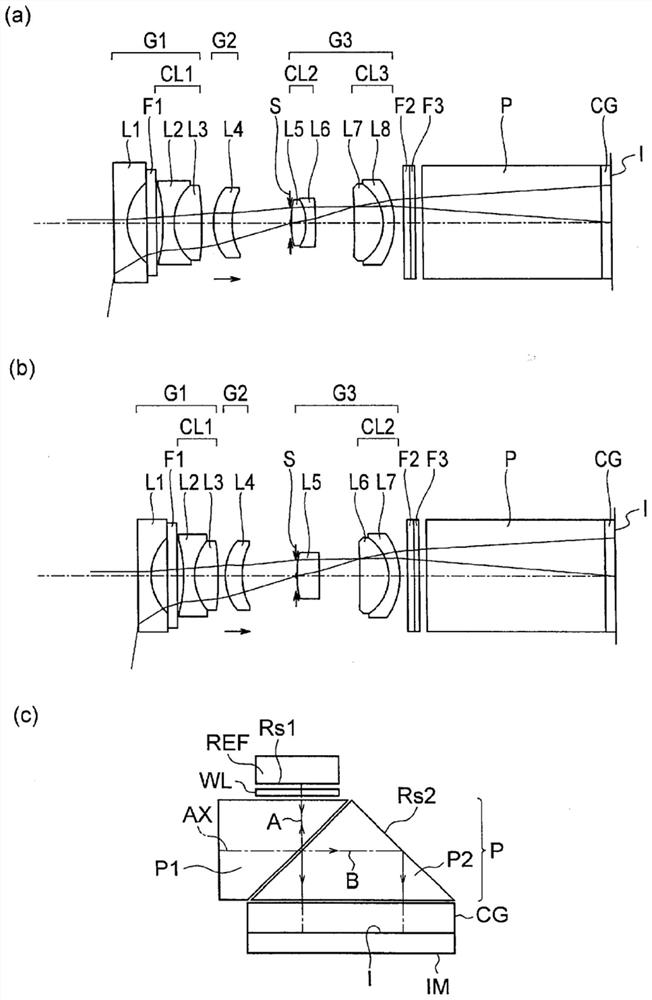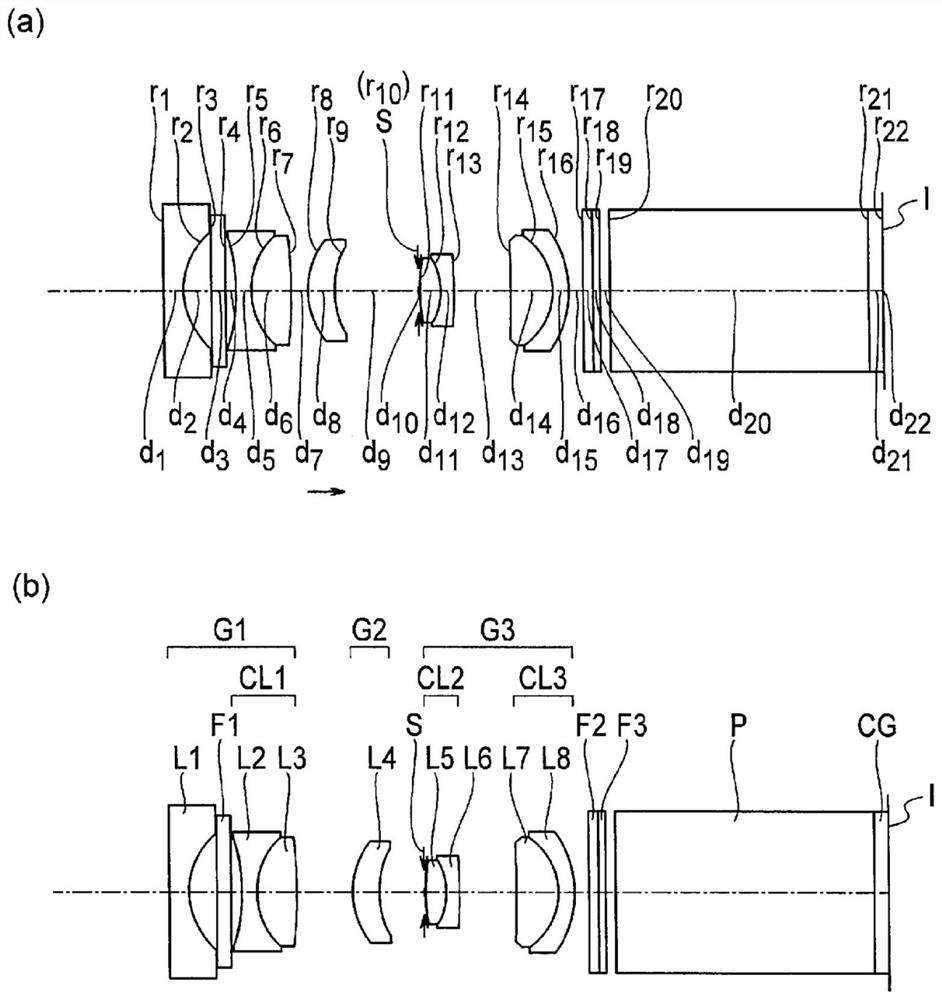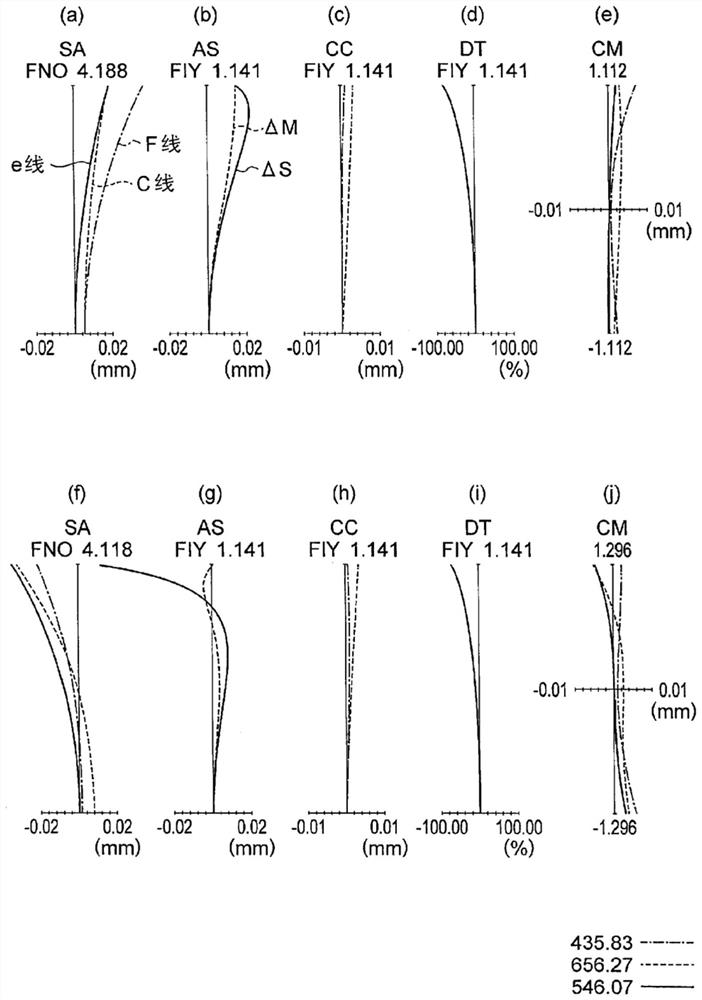Objective optical system for endoscope
An optical system and objective lens technology, which is applied in the field of endoscope objective lens optical system, can solve the problem that the position of the object is not included, and achieve the effect of short overall length and good correction of various aberrations
- Summary
- Abstract
- Description
- Claims
- Application Information
AI Technical Summary
Problems solved by technology
Method used
Image
Examples
Embodiment 1
[0152] The objective optical system for an endoscope according to Example 1 will be described. The objective optical system for an endoscope of Embodiment 1 includes a first lens group G1 having a negative refractive power, a second lens group G2 having a positive refractive power, and a third lens group G2 having a positive refractive power, which are sequentially arranged from the object side to the image side. Lens group G3.
[0153] The first lens group G1 has a plano-concave negative lens L1 whose object side is a plane, a bi-concave negative lens L2, and a bi-convex positive lens L3. Here, a cemented lens CL1 is formed by a biconcave negative lens L2 and a biconvex positive lens L3.
[0154] The second lens group G2 has a positive meniscus lens L4 with a convex surface facing the object side.
[0155] The third lens group G3 has a biconvex positive lens L5, a negative meniscus lens L6 having a convex surface facing the image side, a biconvex positive lens L7, and a neg...
Embodiment 2
[0161] The objective optical system for an endoscope according to Example 2 will be described. The objective optical system for an endoscope of Embodiment 2 includes a first lens group G1 having a negative refractive power, a second lens group G2 having a positive refractive power, and a third lens group G2 having a positive refractive power, which are sequentially arranged from the object side to the image side. Lens group G3.
[0162] The first lens group G1 has a plano-concave negative lens L1 whose object side is a plane, a bi-concave negative lens L2, and a bi-convex positive lens L3. Here, a cemented lens CL1 is formed by a biconcave negative lens L2 and a biconvex positive lens L3.
[0163] The second lens group G2 has a positive meniscus lens L4 with a convex surface facing the object side.
[0164] The third lens group G3 has a biconvex positive lens L5, a negative meniscus lens L6 having a convex surface facing the image side, a biconvex positive lens L7, and a neg...
Embodiment 3
[0170] The objective optical system for an endoscope according to Example 3 will be described. The objective optical system for an endoscope of Embodiment 3 includes a first lens group G1 having a negative refractive power, a second lens group G2 having a positive refractive power, and a third lens group G2 having a positive refractive power, which are sequentially arranged from the object side to the image side. Lens group G3.
[0171] The first lens group G1 has a plano-concave negative lens L1 whose object side is a plane, a bi-concave negative lens L2, and a bi-convex positive lens L3. Here, a cemented lens CL1 is formed by a biconcave negative lens L2 and a biconvex positive lens L3.
[0172] The second lens group G2 has a positive meniscus lens L4 with a convex surface facing the object side.
[0173] The third lens group G3 has a biconvex positive lens L5, a negative meniscus lens L6 having a convex surface facing the image side, a positive meniscus lens L7 having a c...
PUM
 Login to View More
Login to View More Abstract
Description
Claims
Application Information
 Login to View More
Login to View More - R&D
- Intellectual Property
- Life Sciences
- Materials
- Tech Scout
- Unparalleled Data Quality
- Higher Quality Content
- 60% Fewer Hallucinations
Browse by: Latest US Patents, China's latest patents, Technical Efficacy Thesaurus, Application Domain, Technology Topic, Popular Technical Reports.
© 2025 PatSnap. All rights reserved.Legal|Privacy policy|Modern Slavery Act Transparency Statement|Sitemap|About US| Contact US: help@patsnap.com



